This post may contain affiliate links. Please read our disclosure policy.
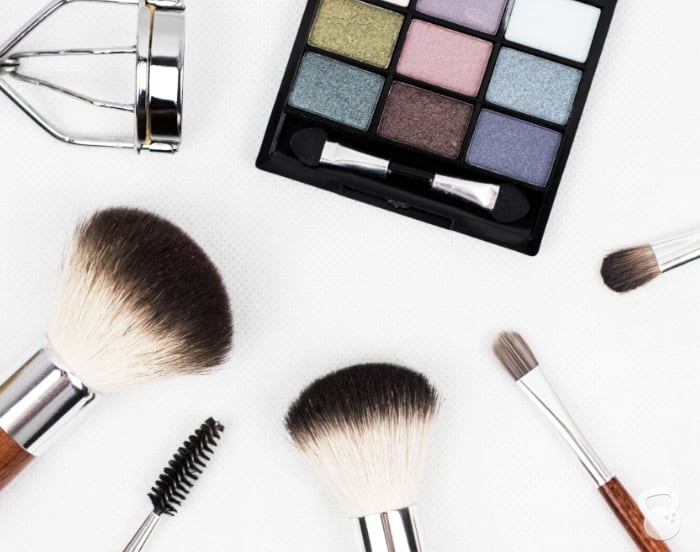
Since making the switch to clean beauty products years ago, I have done a lot of research about clean beauty brands and tested hundreds of different clean beauty products. Some of them have been incredible, while others have been the actual worst.
Back when I started searching for clean beauty brands, I was overwhelmed. I wasn’t entirely sure what ingredients to avoid, and I often had trouble finding ingredients lists for individual products. It also seemed like a lot of brands that claimed to be “clean” or “natural” contained known harmful ingredients in them, such as fragrance and PEGs (examples can be seen in the guide below!).
But the most frustrating thing of all was that I didn’t know which products actually worked. And who wants to waste money on expensive beauty products that do nothing? NOT ME.
So—as I do—I buckled down and got to work. After a lot of research, I figured out what harmful ingredients to avoid that are often found in skin care and makeup products. (Interested in my research? Check out 10 Harmful Ingredients to Avoid in Makeup and Skincare Products.)
I also had many conversations with clean beauty brands about their ingredients, EWG rating, and how they test for contaminants like heavy metals. There is almost zero federal regulation of the cosmetics industry in the United States, so it’s up to clean beauty brands to disclose ingredients and test for contaminants.
And lastly, I did a lot of research on active ingredients, especially when it comes to safe, active ingredients that have proven effects. For example, vitamin C is great for brightening skin tone, while bakuchiol can help reverse fine lines and wrinkles. YES PLEASE!
After being asked about different clean beauty brands for the the 100th time, I decided it was finally time to compile all of my research in my comprehensive Guide to Clean Beauty Brands.
In the table below, I’ve included a list of all of the current and popular brands in the clean beauty industry, and where each stands in terms of transparency, harmful ingredients, and testing for contaminants. I’ve also included my personal “Top Picks”, which are brands that check all the boxes and make safer products that actually work. Based on what’s important to you, you’ll be able to make some quick decisions about where to start, and what to buy.
But Do Clean Beauty Products Actually Work?
Back in the day, I felt like I had to choose one: clean beauty products or products that worked. Especially when it came to makeup! Now, that’s not the case.
The best clean beauty products should not only hold high standards for the quality and safety of their ingredients, they also need to work and/or have proven effects.
Foundation should have buildable coverage that doesn’t clog pores, lipstick should be creamy and long lasting, and anti-aging moisturizers should improve collagen production and help to reverse the signs of aging.
An important lesson I learned: A product doesn’t have to be 100% “natural” or organic to be safe. There are a lot of synthetic ingredients (specifically, active ingredients) that are safe and necessary, especially when considering the preservation of a product and making sure it doesn’t become contaminated with bacteria or mold.
Bottom line: we don’t have to compromise safety and health for beauty anymore. There are a number of different clean beauty brands that make products that are both safe and effective that are free of known harmful ingredients, including endocrine disruptors and carcinogens, and test for contaminants like heavy metals.
Jump to:
No Endocrine Disruptors, Fragrance, PEGs, Oxybenzone, and More!
All of the brands included as my “Top Picks” in my Guide to Clean Beauty Brands do not use any of the harmful ingredients listed in my 10 Ingredients to Avoid in Makeup and Skincare Products. These brands do not use known endocrine disruptors, such as parabens and phthalates, which are linked to breast cancer and birth defects. They do not use chemical sunscreens, such as oxybenzone. And they don’t use undisclosed Fragrance or Parfum, which can be a cocktail of carcinogens, allergens, endocrine disruptors, and irritants.
Keep in mind: While some brands claim to be “clean” and “natural”, they may still use known harmful ingredients. I’ve included these details in the guide below.
A note on Fragrance: One of the biggest issues I found with clean and “natural” beauty brands is that many use “Fragrance” or “Parfum” as an ingredient. Sometimes, this is a blend of natural oils. Other times, it’s not. I’ve annotated this difference based on what each company told me. Either way, I don’t love the lack of transparency with this, especially given the fact that Fragrance and Parfum has been a vehicle for carcinogens, irritants, and endocrine disruptors in the cosmetic industry. I don’t think this is reason enough to write off a brand entirely, so if a brand was transparent and confirmed it was a natural blend of oils, this information is included in the table.
Ingredient Transparency
I want to know exactly what I’m putting on my face and skin when it comes to makeup and skincare products. And the only way to know that is to have clear and easy access to ingredients lists.
While most clean beauty brands are authentic and transparent with their ingredients, some who say they are “safer” or “clean” are not. This is why I’ve included a column to designate that each clean beauty brand in the guide has ingredient transparency. Reputable clean beauty brands will also have clear information on their website about the ingredients they do not include in their products. If they don’t, it’s a red flag.
Heavy Metal Testing
Should we be concerned about contaminants like heavy metals? The short answer is YES.
Chronic heavy metal exposure, which happens when you’re exposed to low levels of heavy metals such as lead, mercury, and aluminum over an extended period of time, has clear links to cancer, birth defects, kidney disease, and lung damage.
Heavy metals can contaminate cosmetics in one of two ways: they can be present in raw materials used to make a product, and/or they can contaminate products in the manufacturing process. For more information on this, check out Does Your Makeup Contain Heavy Metals?
The Food and Drug Administration has published acceptable levels for heavy metals in cosmetics, but doesn’t require companies to abide by these standards or test products for safety. The problem? A recent federal analysis found that over 400 shades of lipstick from popular brands like L’Oreal and Maybelline were contaminated with trace amounts of lead.
In the table, I’ve included information about whether a company tests individual ingredients and/or end products for heavy metal contamination. The only company I’ve found that tests both is Beautycounter, although I hope many brands follow suit!
There are some clean beauty brands that do test raw materials (the ingredients themselves) and end products, and you’ll find that annotated in the guide below.
Some companies do self-funded testing, while others rely on third-party testing to make sure products are within FDA recommended limits. This can be misleading, however, as the FDA doesn’t have limits for certain heavy metals. Also, some people consider the current FDA limits in the US to be too high. For example, the current FDA upper limit for lead is 10.0 ppm, whereas some companies like Beautycounter who perform their own testing and set the limit at 0.2 ppm.
Safe, Active Ingredients
OK, so we now have a list of clean beauty brands to purchase from! YAY! But, HOW DO WE KNOW IF THE PRODUCTS ACTUALLY WORK?
This, my friends, is the most challenging part of all.
I’ve tried a lot of “100% natural” products in my day that only made my skin worse or just performed horribly. (Don’t even get me started on the clay powdered eyeshadow I tried that was tinted with vegetable extracts. #fail). So, just because a product doesn’t have any of the bad stuff doesn’t mean it will be useful or actually work.
In my Guide to Clean Beauty Brands, I’ve included a column to confirm that each brand uses safe, active ingredients in their products. Active ingredients are isolated compounds that have a predictable effect. Many of them (specifically, the ones found in plants) are like broad spectrum nutrients for your skin. Examples include vitamin C, fruit extracts, salicylic acid, and pure CoQ10.
In my research and testing, I’ve found that some clean beauty brands focus on natural formulations (with antioxidant rich oils, for example), while others put more focus on creating clean formulations that contain high end active ingredients. Personally, I much prefer the later. The clean beauty brands in my “Top Picks” are ones that I know produce safe and effective products that utilize the latest in clean science. In other words, I am confident they perform well and actually work.
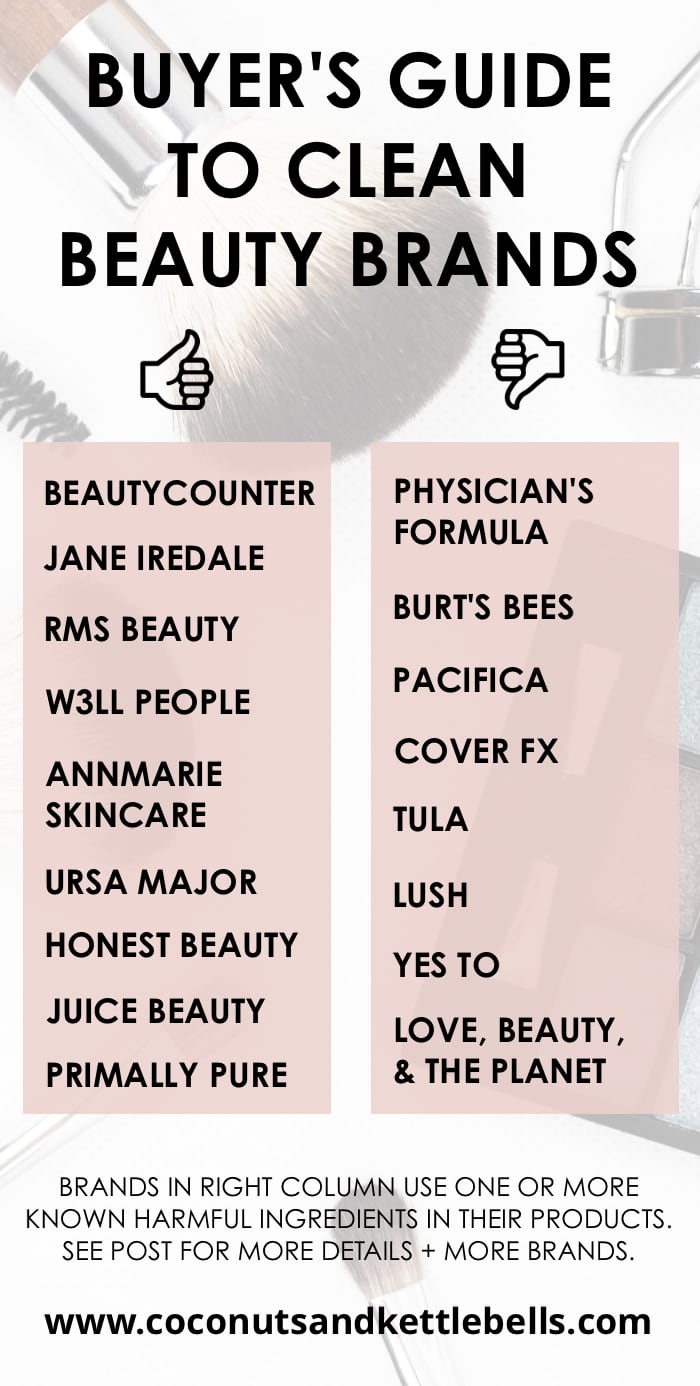
My Guide to Clean Beauty Brands
Below you’ll find a comprehensive guide to all of the clean beauty brands I’ve researched. I’ve been in contact with each brand to discuss this information. If a specific brand chose not to respond to my questions, there’s an “X” there for the lack of transparency.
Note: The information in the table is continually being updated! If you work for a brand on this list and know that formulations/ingredients/testing has changed, please comment below so I can work with you and the brand directly to make the appropriate updates!
My Top Picks:
1. Beautycounter: Best High-Performing Clean Makeup + Skin Care
Beautycounter is the only brand that meets all criteria and tests both raw materials and end products for contaminants like heavy metals. It’s why I use Beautycounter now exclusively for skin care and makeup. Recommended products: The Countertime line (high performing anti-aging skin care), the Overnight Resurfacing Peel, and the All Bright Vitamin C Serum. What drew me to Beautycounter was the makeup—its the only clean makeup brand that was high-performing, long lasting, and had deep pigments/colors. They also do rigorous testing in their color cosmetics for heavy metals like lead.
2. Jane Iredale – Best Mineral Makeup
Jane Iredale is a great option if you prefer a more natural look. Jane Iredale tests all cosmetics for contaminants like heavy metals, which is so important when it comes to mineral makeup. While they’re not EWG certified, they meet all criteria otherwise. Recommended products: The PurePressed Mineral Powder Foundation.
3. RMS beauty – Best Natural/Organic-Based Makeup
RMS beauty is another great option if you prefer lighter, more natural makeup. Most of their ingredients are organically sourced, and they test raw materials for heavy metals. I don’t have any personal recommendations here, as I haven’t found any makeup items that I love—but that doesn’t mean it’s a bad choice or won’t fit your specific needs.
4. Primally Pure – Best Organic/Natural Skin Care
Primally Pure is a great option for people who want to stick with paleo-friendly and organic skin care. While they don’t test for heavy metals—they do source their organic ingredients carefully. Recommended products: The Everything Spray is the best toner on the market! Also love the Dry Shampoo, and Gua Sha Stone (check out my Gua Sha (Natural Botox) Facial Massage Tutorial!)
5. Wellnesse – Best Body Care
Wellnesse is relatively new to market, but gets mention from me because I’ve been searching for clean body care brand for quite some time. Recommended products: Wellnesse makes the best toothpaste on the market (and I’ve tried a lot).
(To view entire table, use the scrolling feature to scroll right)
BRAND | TRANSPARENT WITH INGREDIENTS? | FREE OF 10 HARMFUL INGREDIENTS | HEAVY METAL TESTING | UNDISCLOSED FRAGRANCE | ACTIVE INGREDIENTS | EWG CERTIFIED |
Yes | Yes | Yes: individual ingredients + end products | No | Yes (high performing clean skin care and makeup) | Yes | |
Yes | Yes | Yes: individual ingredients | No | Yes (high performing clean makeup) | No | |
Yes | Yes | Yes: individual ingredients | Yes: "Parfum" with clarity it's only natural essential oils | Yes | No | |
Yes | Yes | Yes: individual ingredients | No | Yes | Yes | |
Yes | Yes | Yes: individual ingredients | No | Yes | No | |
Yes | Yes | Yes: individual ingredients | No | Yes | No | |
Yes | Yes | Yes: individual ingredients | No | Yes | No | |
Yes | Yes | Yes: individual ingredients | No | Yes | No | |
Yes | Yes | Yes: individual ingredients | Yes: Parfum (Fragrance) with clarity it's organic extracts and essential oils | Yes | No | |
Yes | Yes | Would not answer | No | Yes (high performing clean skin care and makeup) | Yes | |
Yes | Yes | Would not answer | No | Yes (high performing clean makeup) | Yes | |
Yes | Yes | No | No | Yes (high performing clean skin care) | No | |
Yes | Yes | Would not answer | Yes: "Parfum" with clarity it's only natural essential oils | Yes | No | |
Yes | Yes | Would not answer | Yes: "Fragrance" with clarity it's only natural essential oils | Yes | No | |
Yes | Yes | Would not answer | No | Yes | No | |
Yes | Yes | No | Yes: "Aroma" with clarity that it's an essential oil blend | Yes | No | |
Yes | Yes | Would not answer | No | Yes | No | |
Yes | Yes, but use with caution. Some products contain retinyl palmitate | Yes: individual ingredients, but use aluminum packaging | No | Yes | No | |
Yes | No: Parfum | No | Yes: Some say natural, others don't—need more clarity | Yes | No | |
Yes | No: Chemical Sunscreens, Synthetic Fragrance | Would not answer | Yes: "Fragrance", clarified it is synthetic and natural, does not contain any of their "banned" 1500 ingredients | Yes | No | |
Yes | No: PEGs. Some products also contain retinyl palmitate | No | No | Yes | No | |
Yes | No: PEGs, Synthetic Fragrance | Would not answer | Yes | Yes | No | |
Yes | No: PEGs | Would not answer | No | Yes | No | |
Yes | No: Parabens, Synthetic Fragrance, SLS + more | Would not answer | Yes | Yes | No | |
Yes | No: Synthetic Fragrance | Would not answer | Yes | Yes | No | |
Yes | No: Synthetic Fragrance. Some products also contain retinyl palmitate | Would not answer | Yes | Yes | No | |
Yes | No: PEGs, Synthetic Fragrance, Chemical sunscreens | Would not answer | Yes | Yes | No | |
Yes | No: Chemical Sunscreens, PEGs, Synthetic Fragrance | Would not answer | Yes | Yes | No | |
No | No: PEGs, Synthetic Fragrance, + more | No | Yes | Yes | No | |
Yes | No: PEGs, undisclosed fragrance | Would not answer | Yes | Yes | No | |
Yes | No: PEGs, Synthetic Fragrance, Chemical Sunscreens | Yes—"Some end products are tested by third party company to make sure they meet FDA guidelines." | Yes | Yes | No | |
Yes | Yes | Would not answer | No | Yes | No | |
Yes | Yes | Sometimes. "We typically test finished products that could naturally have trace heavy metals (ie clay based.)" | No | Yes | Yes | |
Yes | Yes | Would not answer | No | Yes | No | |
Yes | No: PEGs | Yes—"Some end products are tested by third party company to make sure they meet FDA guidelines." | No | Yes | No | |
Yes | No: Chemical Sunscreens, PEGs, Synthetic Fragrance | Would not answer | Yes | Yes | No | |
Yes | Yes | Would not answer | No | Yes | No |
What clean beauty brands do you love? Got questions about a specific brand? Ask below!
Be strong,

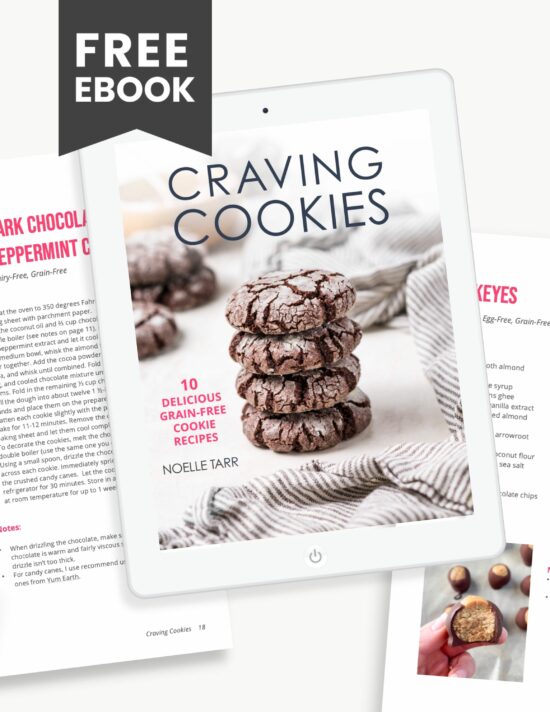
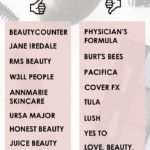
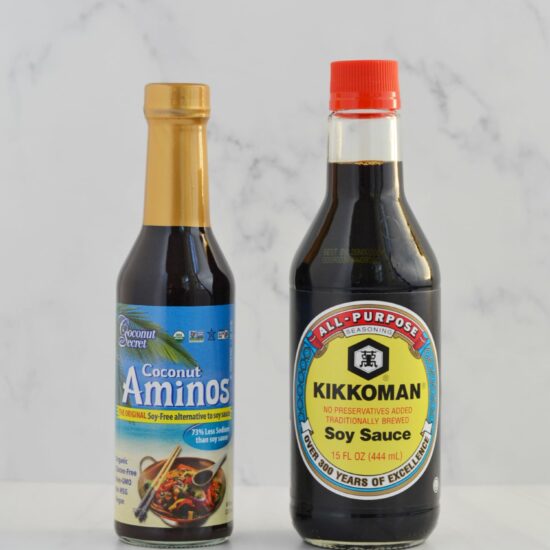
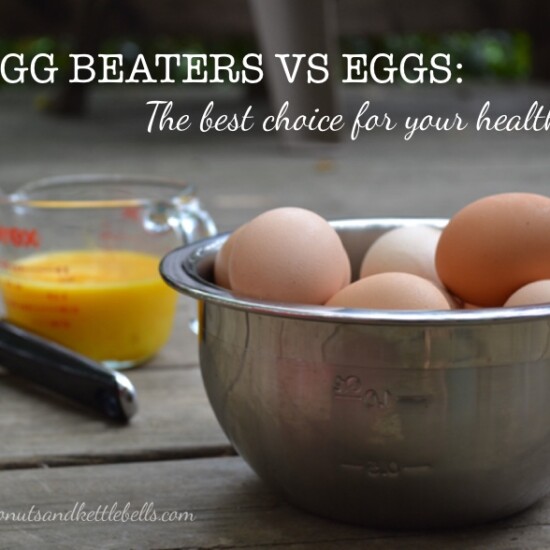
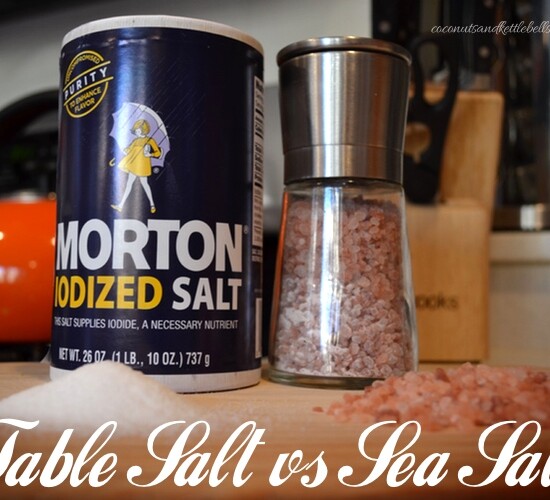
Becky says
Do you have any information on Bare Minerals?
Noelle Tarr, NTP, CPT says
Not currently! Will add soon.
Mayerlis says
I love Natura Culina, Crunchi and Pure Haven!
Leslie says
I am trying out acure. I love beautycounter and Jane Iredale but adding a few acure products and love them.
Noelle Tarr, NTP, CPT says
I’m adding acure to the list shortly!
Brooke says
What about Glossier? They do a lot of marketing towards more natural, clean products and some products are listed on EWG but overall it’s hard to tell what’s safe.
Noelle Tarr, NTP, CPT says
Just a quick peek at them—Glossier isn’t free of the 10 harmful ingredients. They use PEGs, undisclosed synthetic fragrance, and chemical sunscreens.
Amelia says
Thank you for this valuable information! Any thoughts/information on Melaluca makeup?
Noelle Tarr, NTP, CPT says
There is absolutely no information on their website about their ingredients.
Jessica says
Any info about thrive cosmetics?
Jessica says
Nevermind, thought I scrolled all the way down, but didn’t smh
Annika says
Id love to see info about Tarte and Clinique’s brands!
Noelle Tarr, NTP, CPT says
I’ll add both of these. Both are not clean beauty brands, but I went ahead and reached out to each company since both companies are fairly popular.
Julie says
What about Arbonne?
Noelle Tarr, NTP, CPT says
I deep a deep dive last year, and had a hard time finding clear information on certain products/ingredients. It’s also hard to get in touch with them. I would contact an arbonne consultant and ask about testing for heavy metals. If someone has someone I can speak to at the company via email, please let me know.
Carrie says
Would love to know about the Acure and Mad Hippie skincare and hair products brand as well 🙂 thanks so much for sharing all this!
Noelle Tarr, NTP, CPT says
Adding these two—and reached out to both companies!
Angie says
Do you know of Limelife by Alcone?
Noelle Tarr, NTP, CPT says
I don’t! I did take a quick peek—unfortunately they haven’t submitted any products to EWG, but the first product I checked out wasn’t free of my 10 harmful ingredients—it had PEGs.
Abbie says
What about Crunchi?
Noelle Tarr, NTP, CPT says
Looks good from an initial look! Will reach out to the company and add this to the list.
Lindsay says
Thank you for this! It’s an impressive amount of work and I greatly appreciate it.
Leah Cooper says
It’s awesome to have all this information in one place, thank you! Do you have plans to make this a fluid document where you add companies as time goes on? A few other great clean companies are Primal Life Organics, Araza Beauty & Alitura.
Noelle Tarr, NTP, CPT says
Yes!! Plan to update!
Charisma says
Thank you so much for these clean skincare articles! I just discovered this website and joined the email list right away! I was wondering if you could look into the brands Origins and Dr.Organic.
Noelle Tarr, NTP, CPT says
Great to hear! I will add them to the list! 🙂
Kannika says
What about Biossance? They also use backuchiol and squalene.
Noelle Tarr, NTP, CPT says
Just took a quick peek and they look good!! I’ll add it to the list and do some follow-up with the company.
Ashley says
Biossance uses squalANE not squalene.
Brittani Milford says
Do you have an opinion on farmasi
Gabrielle says
I really like the Badger Balm company– both for their hand salves, mineral sunscreens & (small) line of face care. EWG gives their products good ratings (3 at worst, mostly 1 & 2).
What do you think? Anything to worry about?
Noelle Tarr, NTP, CPT says
Badger is a GREAT company with safe ingredients. Their sunscreens are all mineral based—but do leave a white film on the skin. I personally use their chapstick and bug spray! I will add them to the list shortly!
Christina Ureste says
Have you done much research on Aveda? Or any other hair care line?
Jennifer Huffman says
U don’t mention top Department store make-up counter brands that 85% of American women wear. Like Dior, Lancome, Estee Lauder, IT & many more. Why? One would be more apt 2 try products u recomend if had stats on these other brands. Their coverage. & beauty results r far better than drug store brands you’ve mentioned. Which makes one thinks those brands r what you’ve chosen 2 compare the “clean” beauty products 2. Please expound.
Noelle Tarr, NTP, CPT says
This entire blog post is specific to clean beauty brands, hence the title, “Buyer’s Guide to Clean Beauty Brands”.
Sharon says
Would love your thoughts on Nude by Nature!
Some brands are hard to find in Canada (and not cost a fortune). This brand seems mid-priced.
Jess says
What are your thoughts on Younique? Looking into their skin care line. Thanks for your time!
Noelle Tarr, NTP, CPT says
I haven’t seen any info about them being a part of the clean beauty movement—but I do have a ton of recommended brands and tips for reviewing brands in my post Buyer’s Guide to Clean Beauty Brands: Where to Start and What to Avoid.
Amber says
Love this! Thank you. Have you looked into Sei bella?
Hersha says
Do you haven information on Seint formally Maskcara products?
Noelle Tarr, NTP, CPT says
Hey there! They aren’t a clean beauty company and don’t really claim to be. They don’t list ingredients on some skin care items, which is a red flag. I found one item’s ingredients, and it did have PEGs and synthetic fragrance.
Hersha says
Thank you for the reply about Maskcara. Question on one other – Melaleuca products?
Noelle Tarr, NTP, CPT says
Not at this time. Try using my 10 Harmful Ingredients to Avoid in Makeup and Skincare Products post to check the ingredients lists!
Angela says
Do you have any information about Dermalogica?
Sandra says
Do you have any information on Atomy skin care products, Aveda hair products, and Aloette makeup line? Thanks for your help.
Susie says
Thanks for all your research! How about Perfectly Posh?
TK says
Hi! Any info on Natura Culina? Thanks!
Noelle Tarr, NTP, CPT says
Hey TK! Not at this time. Please use this list until I have the resources to add some more brands: 10 Harmful Ingredients to Avoid in Makeup and Skincare Products
Colette Olson says
Do you know anything about Rare Beauty?
Noelle Tarr, NTP, CPT says
I do—it’s not a clean beauty brand.
Marisa says
Hi, do you know anything g about faerie organic mineral foundations?? Which mineral foundations are good? Thanks
Noelle Tarr, NTP, CPT says
I don’t. I have some listed above in the chart.
M. D. says
Hi, what about Arbonne skincare?
Noelle Tarr, NTP, CPT says
Hey M.D.! I will add it to the list soon. Last I checked I couldn’t get ingredients lists from them but now it’s changed. 🙂
rawia says
hi, do you know kleem organics is it clean brand?
Amy Carmichael says
Bobby Brown?
Dr. Brandt?
Babyganics? (Sunscreen etc)
Jessica says
Is tatcha clean?
Karen says
Hello. Have you looked into Thrive Causemetics at all? I have an auto-immune disorder and am very curious about them. They seem to be good and are a bit cheaper than Beautycounter. If so, I’d love to know your thoughts! Thank you.
Noelle Tarr, NTP, CPT says
I have! They’re included in the table above. You have to look at individual products because some contain PEGs and retinol. Also important to note, they aren’t tested for contaminants.
Debra Brouillard says
I use Environ recommended by my skin doctor. Thoughts. Also use BOOM thoughts
Cristela Johanneck says
Have you looked into Farmasi cosmetics? Where do they fall on the clean beauty scale?
Katie says
Thank you for this! Have you had a chance to research the brand Kosas?
Kristina says
Any info on Origins?
Dia Pouchet says
What are your thoughts about Thrive costmetics.
I’ve been on a healthy clean journey for a few years now but since moving to the US 2 years ago, I’m not sure what to buy. In Europe standards for clean Products are much higher than in the USA, so would greatly appreciate more reviews like the above.
Noelle Tarr, NTP, CPT says
Hi Dia! I did the assessment for Thrive Causemetics in the table above. While they are a clean beauty brant, they use PEGs, and don’t test for heavy metals.
Robin Stilley says
What about Paula’s Choice Brand? They are expensive and I don’t want to use them if they aren’t a clean brand. I use their moisturizers
Noelle Tarr, NTP, CPT says
Hi Robin! Paula’s Choice is not a clean beauty brand. You can check individual products on the EWG website: https://www.ewg.org/skindeep/search/
Denise says
What do you think of Josie Maran product’s and Beckmann?
Beauty love says
Would you do a review of the drunk elephant line?
Lauren says
This could use updating – Honest Beauty is EWG certified.
Amy says
Hi!
Do you have any information about Farmasi products?
Thank you so much!
Noelle Tarr, NTP, CPT says
I haven’t tried those personally.
Jamie Roberts says
I would love to know about DIME beauty. It’s advertising as clean but is it really?
Noelle Tarr, NTP, CPT says
I’m actually working on a full review now! Some things I like, others I don’t. But the ingredients are clean! I’ll share it here once I’m done with the review.
Joy Jalane Pfortmiller says
Have you tested Mary Kay or Melaluca?
Noelle Tarr, NTP, CPT says
No
Madelyn says
Can you also add Elf, OPI, and Revlon?
Sandra says
What do you think about the brands Osea and Ilia?